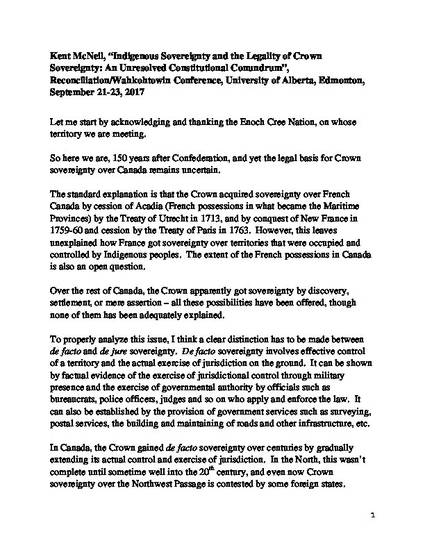
Let me start by acknowledging and thanking the Enoch Cree Nation, on whose territory we are meeting.
So here we are, 150 years after Confederation, and yet the legal basis for Crown sovereignty over Canada remains uncertain.
The standard explanation is that the Crown acquired sovereignty over French Canada by cession of Acadia (French possessions in what became the Maritime Provinces) by the Treaty of Utrecht in 1713, and by conquest of New France in 1759-60 and cession by the Treaty of Paris in 1763. However, this leaves unexplained how France got sovereignty over territories that were occupied and controlled by Indigenous peoples. The extent of the French possessions in Canada is also an open question.
Over the rest of Canada, the Crown apparently got sovereignty by discovery, settlement, or mere assertion – all these possibilities have been offered, though none of them has been adequately explained.
Available at: http://works.bepress.com/kent_mcneil/159/

Paper presented at the Reconciliation/Wahkohtowin Conference, University of Alberta, Edmonton, September 21-23, 2017.